Preventing Home Injuries - Practical Tips
In our fast-paced lives, we often overlook the importance of safety within the comfort of our own homes. Home injuries can happen in the blink of an eye, and they can affect anyone, from toddlers to seniors. That's why it's crucial to arm ourselves with knowledge and practical strategies to minimize these risks. This article provides essential strategies to minimize the risk of injuries at home, focusing on safety measures, awareness, and proactive approaches to create a safer living environment for everyone. By understanding the common hazards and implementing simple yet effective safety practices, we can transform our homes into secure sanctuaries where everyone can thrive without fear of injury.
Home injuries can occur in various forms, including falls, cuts, and burns. Recognizing these common risks is the first step towards effective prevention and ensuring a safer home environment for all family members. Did you know that according to the National Safety Council, falls account for the majority of home injuries? This statistic highlights the urgent need for awareness and proactive measures. By identifying potential hazards, such as loose rugs or cluttered walkways, we can take significant steps to protect our loved ones. Additionally, understanding the causes of cuts and burns—like sharp kitchen utensils or hot surfaces—can help us develop strategies to mitigate these risks. Awareness is not just the first step; it's the foundation of a safer home.
Falls are a leading cause of home injuries, especially among older adults. Implementing simple strategies like removing tripping hazards and installing grab bars can significantly reduce the risk of falls in your home. Think about it: a few small changes can make a world of difference. For instance, keeping pathways clear and securing loose cords can prevent unexpected tumbles. Additionally, consider the layout of your home. Is there adequate space to move around freely? Are there areas that require extra attention? Taking a closer look can reveal hidden dangers that might not be immediately obvious.
A clutter-free environment is essential for preventing falls. Regularly organizing and maintaining your living areas can help minimize hazards and create a safe space for family members and guests. Picture this: walking into a room where everything is in its place, and there are no obstacles in sight. Feels good, right? Not only does it create a pleasant atmosphere, but it also significantly reduces the chances of accidents. Make it a habit to declutter regularly, and involve the whole family in the process. This not only teaches responsibility but also fosters a shared commitment to safety.
Proper lighting is crucial in fall prevention. Ensuring all areas of your home are well-lit, especially staircases and hallways, can help individuals navigate safely and avoid accidents. Imagine trying to find your way in a dimly lit room—it's not just uncomfortable; it's dangerous. To enhance visibility, consider using brighter bulbs or adding motion-sensor lights in key areas. This small investment can yield significant safety benefits, especially for those who may have vision impairments.
The bathroom is a high-risk area for falls. Installing non-slip mats, grab bars, and shower seats can greatly enhance safety for all users, particularly the elderly and children. Think about how many times a day we rush into the bathroom. By making it safer, we can prevent slips and falls that can lead to serious injuries. Additionally, consider keeping personal care items within reach to avoid unnecessary stretching or bending. Safety in the bathroom is not just about prevention; it's about creating a space where everyone feels secure.
Fire hazards are another significant concern in homes. Implementing fire safety measures, such as smoke detectors and fire extinguishers, can help prevent injuries and protect your family in case of an emergency. It's essential to regularly check smoke detectors to ensure they are functioning properly. Have you ever thought about how quickly a fire can spread? It only takes a few minutes for flames to engulf a room, so being prepared is key. Make a plan for your family, including escape routes and meeting points, so everyone knows what to do in case of an emergency.
If you have young children, childproofing is essential to prevent injuries. This involves securing furniture, covering outlets, and ensuring hazardous materials are out of reach to create a safer environment for exploration. Kids are naturally curious, and their adventurous spirit can sometimes lead them into trouble. By taking proactive steps, you can allow them to explore their environment safely. Consider using corner guards on sharp furniture edges and installing safety latches on cabinets. These small adjustments can make a big difference in keeping your little ones safe.
The kitchen is often the heart of the home but can also be a dangerous place. Adopting safety practices like using child locks on cabinets and keeping sharp objects out of reach can prevent injuries. Imagine preparing a meal while worrying about little hands reaching for a knife or a hot stove. By organizing your kitchen with safety in mind, you can create a space that is not only functional but also secure. Involve your children in cooking activities to teach them about kitchen safety, turning a potentially hazardous environment into a learning opportunity.
Being prepared for emergencies can significantly reduce the impact of accidents. Having a first aid kit, emergency contacts, and a clear evacuation plan can help you respond effectively to any injury situation. Picture this: an unexpected situation arises, and you know exactly what to do. That peace of mind is invaluable. Regularly check your first aid supplies to ensure everything is up to date, and consider conducting emergency drills with your family to familiarize everyone with the plan. Preparation is key to safety.
Education plays a vital role in injury prevention. Teaching family members about safety practices and encouraging open discussions about potential hazards can foster a culture of safety within the home. It's not just about making rules; it's about creating an environment where everyone feels empowered to speak up about safety concerns. Host family meetings to discuss safety topics and share experiences. This approach not only builds awareness but also strengthens family bonds as you work together toward a common goal: a safer home for everyone.
- What are the most common home injuries? The most common home injuries include falls, cuts, burns, and poisoning.
- How can I prevent falls in my home? You can prevent falls by removing tripping hazards, improving lighting, and installing grab bars in bathrooms.
- What should I include in a first aid kit? A first aid kit should include bandages, antiseptic wipes, gauze, scissors, and any necessary medications.
- How often should I check my smoke detectors? It's recommended to check smoke detectors monthly and replace the batteries at least once a year.

Understanding Common Home Injuries
This article provides essential strategies to minimize the risk of injuries at home, focusing on safety measures, awareness, and proactive approaches to create a safer living environment for everyone.
Home injuries can occur in various forms, and understanding these risks is crucial for effective prevention. Did you know that falls, cuts, and burns are among the most common injuries that happen right in our living spaces? It's surprising how easily accidents can happen in what we consider the safest place—our home. By recognizing these hazards, we can take proactive steps to protect our loved ones and ourselves.
Let's break down some of the most prevalent types of home injuries:
- Falls: This is the leading cause of injuries, particularly for older adults. Slips on wet floors, tripping over clutter, or losing balance on stairs can all lead to serious accidents.
- Burns: Whether from hot surfaces, flames, or scalding liquids, burns can happen in the kitchen or even in the bathroom. It's essential to be aware of our surroundings and take precautions.
- Cuts: Sharp objects like knives or broken glass can easily cause cuts, especially in busy areas like the kitchen or garage. Proper storage and attention can help mitigate these risks.
According to statistics, thousands of people visit emergency rooms each year due to home-related injuries. In fact, the National Safety Council reports that falls alone account for over 8 million hospital emergency room visits annually. This staggering number highlights the importance of understanding the common risks we face in our homes.
Moreover, certain demographics are at a higher risk of sustaining home injuries. For instance, children are naturally curious and often explore their surroundings without understanding the dangers, while older adults may have mobility issues that increase their chances of falling. By taking a closer look at these vulnerable groups, we can tailor our safety measures to better protect them.
To put things into perspective, consider this: if your home were a ship, would you sail it without checking for leaks or potential hazards? Just as a captain ensures the safety of their vessel, it's our responsibility to create a secure environment for our families. By staying informed about common home injuries, we can navigate our daily lives with greater awareness and intention.
Q: What are the most common types of home injuries?
A: The most common types of home injuries include falls, cuts, and burns, which can occur in various areas of the home.
Q: How can I prevent falls in my home?
A: To prevent falls, ensure that your home is clutter-free, install grab bars in bathrooms, and improve lighting in hallways and staircases.
Q: What should I do if someone gets injured at home?
A: If someone gets injured, assess the situation, provide first aid if necessary, and seek medical attention if the injury is serious. Having a first aid kit readily available can be very helpful.
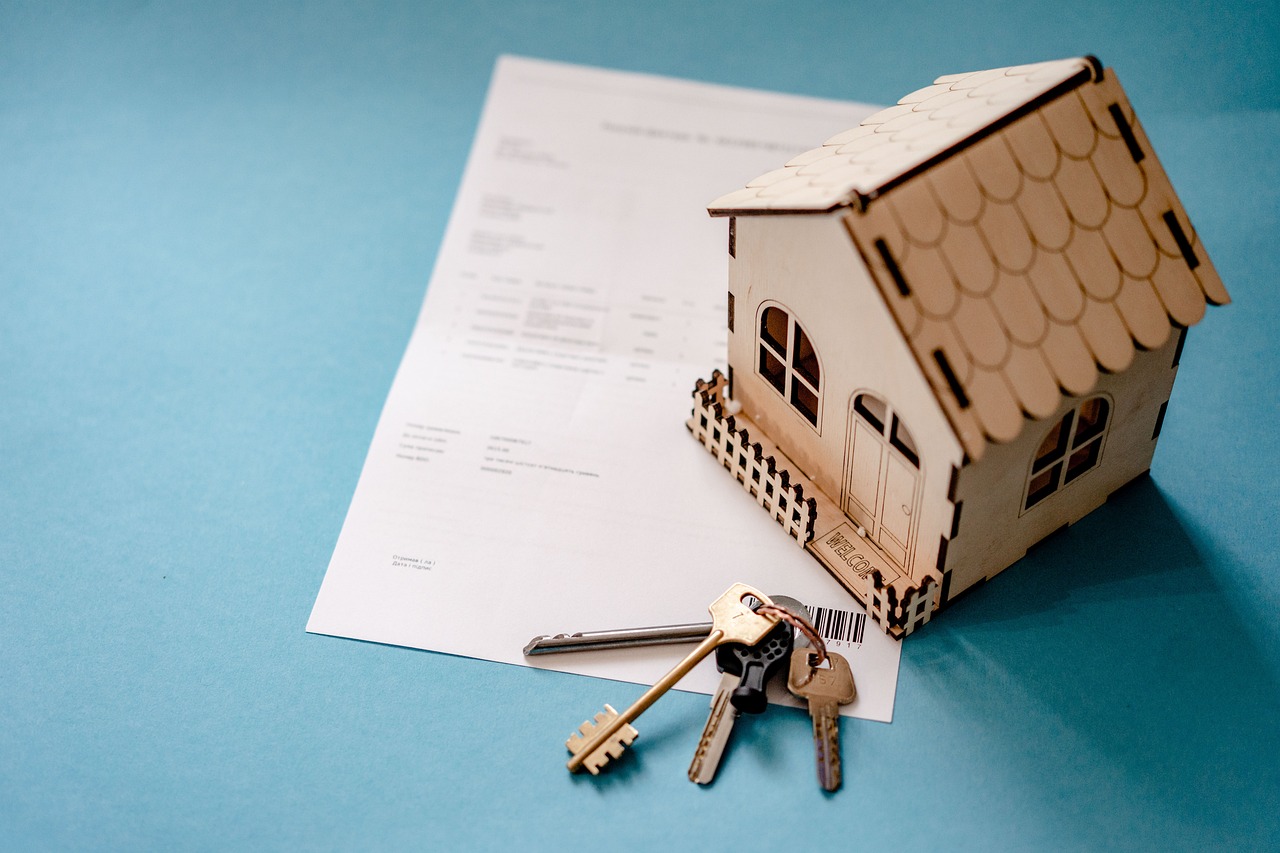
Fall Prevention Strategies
Falls are not just a minor inconvenience—they can lead to serious injuries, especially for older adults and young children. The good news is that many falls are preventable with some simple strategies and a bit of foresight. By taking proactive steps to create a safer environment, you can significantly reduce the risk of falls in your home. It's all about being aware of your surroundings and making a few adjustments that can have a big impact.
First and foremost, removing tripping hazards is crucial. Look around your home and identify any items that could potentially cause someone to trip. This includes loose rugs, electrical cords, and clutter. Imagine walking through your living space and having to dodge obstacles—it's not only annoying but also dangerous! By keeping walkways clear and securing loose items, you can create a much safer path for everyone.
Another effective strategy is to install grab bars in key areas like bathrooms and staircases. These bars provide extra support and stability, making it easier for individuals to navigate slippery surfaces or steep steps. Think of them as a lifeline—something to hold onto when you need that extra bit of security. Additionally, consider using non-slip mats in areas prone to water, like the kitchen and bathroom, to minimize the risk of slipping.
A clutter-free environment is essential for preventing falls. Regularly organizing and maintaining your living areas can help minimize hazards and create a safe space for family members and guests. Establish a routine to check for any potential dangers—this could be a monthly task where you walk through your home and assess the safety of each room. It's like a mini safety audit that can catch issues before they become problems.
Proper lighting is another key aspect of fall prevention. Imagine trying to navigate a dark hallway—it's a recipe for disaster! Ensuring all areas of your home are well-lit, especially staircases and hallways, can help individuals navigate safely and avoid accidents. Consider installing motion-sensor lights that turn on automatically when someone enters a room. This not only enhances visibility but also ensures that lights are on when needed, reducing the risk of falls due to poor lighting.
The bathroom is a high-risk area for falls, but there are several steps you can take to enhance safety. Installing non-slip mats, grab bars, and shower seats can greatly improve safety for all users, particularly the elderly and children. Additionally, keeping items within easy reach can prevent unnecessary stretching or bending, which can lead to accidents. Think of the bathroom as a sanctuary—by making it safe, you can ensure that it remains a place of relaxation rather than a source of stress.
In summary, implementing these fall prevention strategies can create a safer home environment for everyone. By being proactive and making simple adjustments, you can significantly reduce the risk of falls and ensure that your home is a safe haven.
Q: What are the most common causes of falls at home?
A: Common causes include tripping over clutter, slippery surfaces, poor lighting, and lack of support in key areas like bathrooms and staircases.
Q: How can I make my bathroom safer?
A: Install grab bars, use non-slip mats, and consider adding a shower seat to provide extra support and prevent slipping.
Q: Are there any specific lighting recommendations for fall prevention?
A: Use bright, energy-efficient bulbs and consider installing motion-sensor lights in hallways and staircases to enhance visibility.
Q: How often should I review my home for fall hazards?
A: It's a good idea to conduct a safety audit at least once a month to identify and address potential hazards in your home.

Creating a Safe Living Space
Creating a safe living space is not just about aesthetics; it's about ensuring that your home is a sanctuary where everyone can feel secure. Imagine walking through your home and knowing that each corner is free from potential hazards. Sounds comforting, right? To achieve this, you need to take a proactive approach. Start by removing clutter from your living areas. Clutter not only makes your home look messy but also creates tripping hazards that can lead to serious injuries. Regularly organizing your space can significantly reduce these risks.
Consider the layout of your furniture as well. Are there any sharp edges or low coffee tables that could cause injuries? Rearranging furniture to create clear pathways can make a world of difference. Additionally, you might want to think about the materials used in your home. Soft furnishings, rounded edges, and non-slip rugs can all contribute to a safer environment. Safety is not just a checklist; it’s a lifestyle!
Another critical aspect of a safe living space is proper lighting. Dark corners and dimly lit staircases can be silent accidents waiting to happen. Make sure to replace any burnt-out bulbs and consider installing motion-sensor lights in key areas. This way, you won’t have to fumble around in the dark when you get up at night. Moreover, using brighter bulbs can enhance visibility, making it easier for everyone to navigate your home safely.
Lastly, don’t overlook the importance of regular maintenance. Check your smoke detectors, carbon monoxide detectors, and fire extinguishers to ensure they are in working order. Create a checklist and schedule regular inspections. This simple habit can save lives. Remember, a safe living space is a happy living space, and it all starts with you!
- What are some common hazards in the home? Common hazards include tripping over clutter, slippery floors, and sharp objects.
- How can I ensure my home is childproof? Use safety locks, cover outlets, and secure heavy furniture to walls.
- What should I do in case of a fire? Have a fire escape plan, and ensure all family members know how to exit safely.
- How often should I check smoke detectors? It's recommended to check smoke detectors at least once a month and replace batteries annually.

Lighting Improvements
When it comes to preventing falls and ensuring safety at home, play a crucial role. Poorly lit areas can turn even the most familiar spaces into potential danger zones. Imagine navigating through your home in the dark; it’s like trying to find your way through a maze with your eyes closed! To avoid this, consider the following strategies to enhance the lighting in your home:
First and foremost, it’s essential to evaluate the lighting conditions in various areas of your home. Are there dark corners in your living room? Is the hallway dimly lit? Make it a habit to check these spots regularly. You can use LED bulbs for brighter illumination, which not only improves visibility but also saves energy. Additionally, installing motion-sensor lights in areas like hallways and staircases can provide light when needed, reducing the risk of accidents.
Another effective strategy is to utilize natural light whenever possible. Open those curtains and blinds during the day! Natural light not only brightens up a room but can also boost your mood. If privacy is a concern, consider using sheer drapes that allow light to filter through while still providing a level of seclusion.
Moreover, consider adding task lighting in specific areas. For instance, placing table lamps on side tables or using under-cabinet lights in the kitchen can illuminate workspaces effectively. This way, whether you are chopping vegetables or reading a book, you won’t have to squint to see what you’re doing. Don’t forget about the importance of outdoor lighting as well. Pathway lights and motion-sensor lights outside your home can guide you safely to the entrance, especially during nighttime.
Lastly, it’s vital to regularly maintain your lighting fixtures. Dust and dirt can diminish brightness, so make sure to clean your lamps and replace burnt-out bulbs promptly. A well-lit home not only looks inviting but also creates a safer environment for everyone, especially children and the elderly.
- What type of lighting is best for fall prevention? Bright, even lighting is ideal. Consider using LED bulbs and adding task lighting in key areas.
- How can I improve outdoor lighting safely? Install motion-sensor lights and pathway lights to illuminate walkways and entrances.
- Are there specific areas in my home that need more lighting? Yes, focus on staircases, hallways, and any areas where people frequently move around, particularly at night.
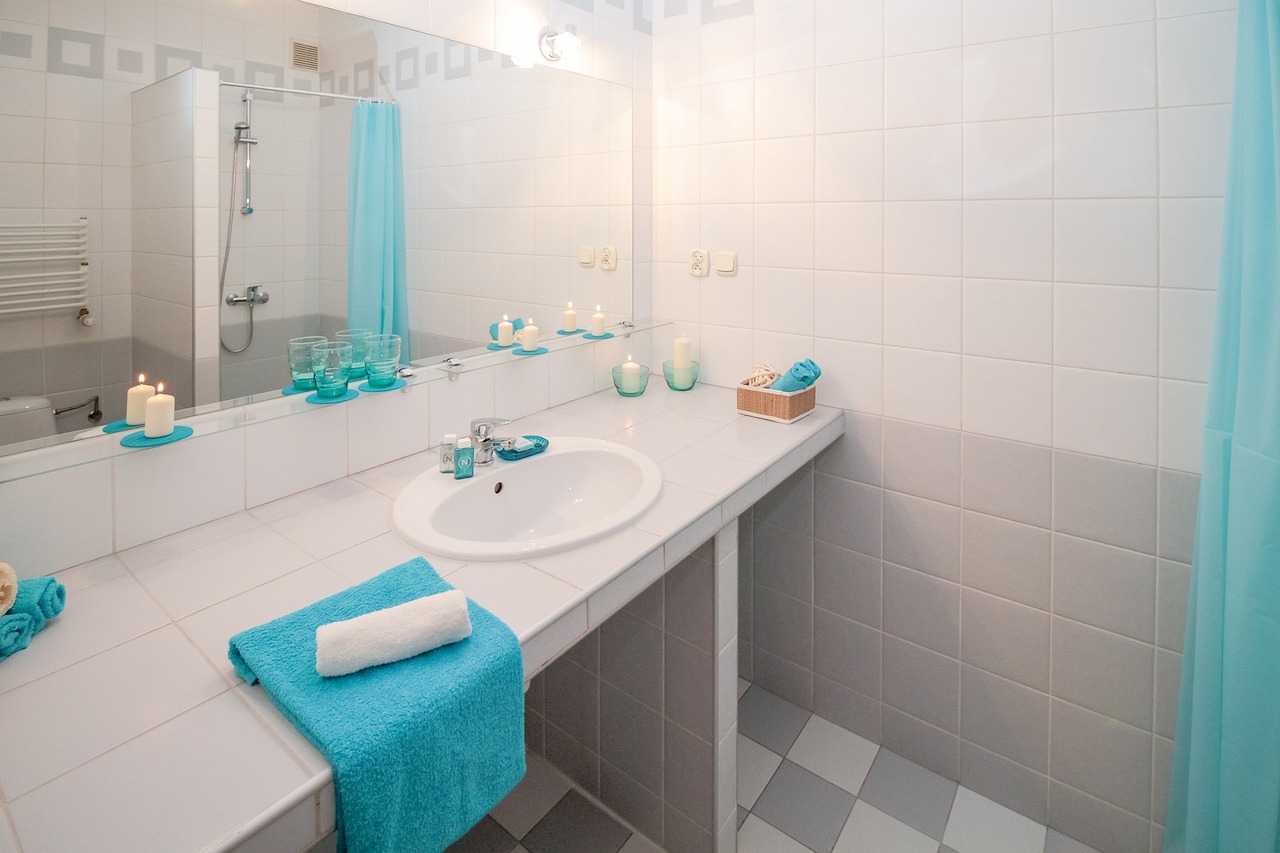
Bathroom Safety Tips
The bathroom, often considered a sanctuary for relaxation, can quickly turn into a hazard zone if proper precautions are not taken. With slippery floors, sharp objects, and hot water, it’s essential to implement safety measures that cater to all family members, especially the elderly and young children. One of the most effective ways to enhance safety in this space is by installing non-slip mats. These mats can provide that extra grip needed to prevent slips and falls, particularly when stepping out of the shower or bathtub. Imagine stepping out of a warm shower, only to lose your footing on a slick surface—yikes! Non-slip mats can be a game-changer.
Another vital addition to your bathroom safety arsenal is grab bars. These sturdy fixtures can be installed near the toilet and inside the shower or bathtub, offering support to those who may struggle with balance. Grab bars act like a lifeline, giving users the confidence to navigate their bathroom routine without fear of falling. When choosing grab bars, ensure they are securely fastened and can support the weight of the person using them.
Additionally, consider using a shower seat. This simple yet effective tool allows individuals to sit while showering, significantly reducing the risk of falls. It’s particularly beneficial for older adults or those recovering from injuries. Just think about it: enjoying a refreshing shower while seated, without the worry of slipping—sounds like a win-win!
Moreover, keeping the bathroom well-lit is crucial. Install bright lights or night lights to illuminate pathways and areas prone to accidents. You wouldn’t want to navigate a dark bathroom in the middle of the night, right? Adequate lighting can make all the difference in avoiding mishaps.
Finally, let’s not forget about the importance of temperature control. Setting your water heater to a safe temperature can prevent scalding injuries. A temperature of 120°F (49°C) is generally recommended to ensure safety without sacrificing comfort. You can easily adjust this setting, and it could save you from a painful burn.
In summary, by implementing these bathroom safety tips—using non-slip mats, installing grab bars, utilizing shower seats, ensuring proper lighting, and controlling water temperature—you can create a safer environment for everyone. Remember, safety is not just about preventing injuries; it's about allowing everyone to enjoy their time in the bathroom without fear. So, take a moment to evaluate your bathroom and make the necessary changes today!
- What are the most common bathroom injuries?
The most common bathroom injuries include slips and falls, burns from hot water, and cuts from sharp objects. Ensuring safety measures are in place can significantly reduce these risks.
- How can I make my bathroom safer for elderly family members?
Install grab bars, use non-slip mats, consider a shower seat, and ensure proper lighting to make the bathroom safer for elderly family members.
- What temperature should I set my water heater to prevent burns?
Setting your water heater to 120°F (49°C) is generally recommended to prevent scalding while still providing comfortable hot water.
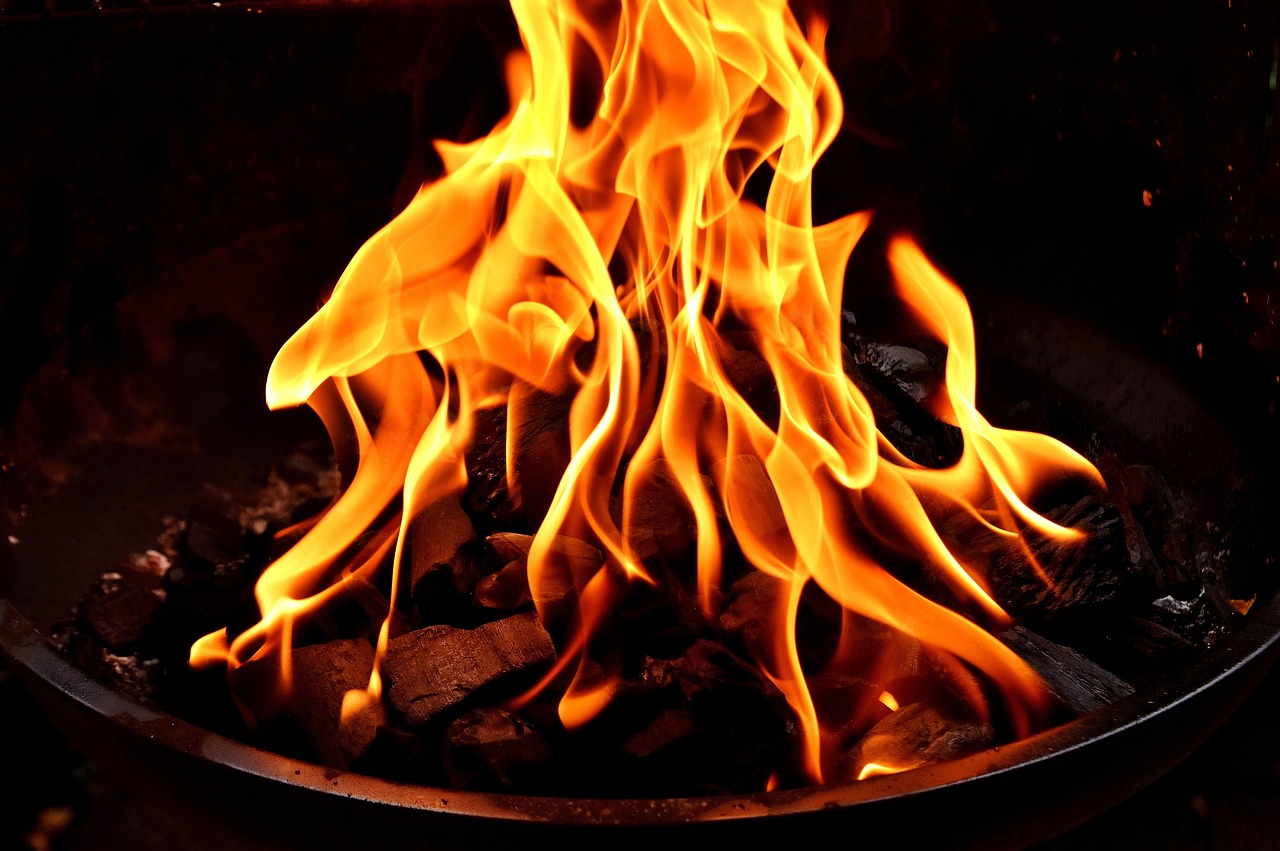
Fire Safety Measures
Fire safety is not just a precaution; it's a necessity that can save lives and protect your home from devastating damage. Every year, countless homes experience fire-related incidents, and many of these could have been prevented with the right measures in place. So, how can you ensure that your home is a safe haven against fire hazards? The first step is to equip your home with essential devices like smoke detectors and fire extinguishers. These devices are your first line of defense, alerting you to danger before it escalates.
Let’s break it down further. Smoke detectors should be installed on every level of your home, especially in sleeping areas. Regular maintenance is crucial; test the alarms monthly and replace batteries at least once a year. If a smoke detector starts beeping, it’s not just an annoying sound—it’s a warning that needs immediate attention. Moreover, consider investing in interconnected smoke detectors. When one goes off, they all do, ensuring that everyone in the house is alerted, no matter where they are.
Next, having a fire extinguisher readily accessible can make a significant difference in controlling small fires before they spiral out of control. Place extinguishers in key locations, such as the kitchen, garage, and near any potential fire hazards. Make sure everyone in your household knows how to use them. A simple acronym to remember is PASS:
- Pull the pin
- Aim low at the base of the fire
- Squeeze the handle
- Sweep side to side
In addition to these devices, it’s essential to practice fire safety habits. For instance, avoid overloading electrical outlets, and never leave cooking food unattended. Keep flammable materials, such as paper and cloth, away from heat sources. In the event of a fire, having a clear evacuation plan can be the difference between safety and disaster. Make sure your family knows at least two ways to exit each room and designate a safe meeting place outside. Regularly practice these drills to ensure everyone is familiar with the routine.
Lastly, consider the benefits of a home fire sprinkler system. Though they can be an investment, these systems can significantly reduce the risk of fire damage and provide peace of mind, especially in larger homes. They work by automatically detecting heat and spraying water directly onto the fire, often extinguishing it before the fire department arrives.
In summary, fire safety measures are critical to protecting your home and loved ones. By being proactive and implementing these strategies, you can significantly reduce the risk of fire-related injuries and damage. Remember, it’s not just about having the right tools; it’s about creating a culture of safety within your home!
1. How often should I check my smoke detectors?
It’s recommended to test your smoke detectors monthly and replace the batteries at least once a year. If your smoke detector is over 10 years old, consider replacing it.
2. Where should I place fire extinguishers in my home?
Fire extinguishers should be placed in key areas such as the kitchen, garage, and near any potential fire hazards. Ensure they are easily accessible and visible.
3. What should I do if my clothes catch fire?
If your clothes catch fire, remember to stop, drop, and roll. This technique can help smother the flames. If the fire is severe, use a fire extinguisher if safe to do so and call emergency services immediately.
4. Are home fire sprinkler systems worth the investment?
Yes, home fire sprinkler systems can significantly reduce the risk of fire damage and provide peace of mind. They automatically activate when a fire is detected, often extinguishing it before firefighters arrive.
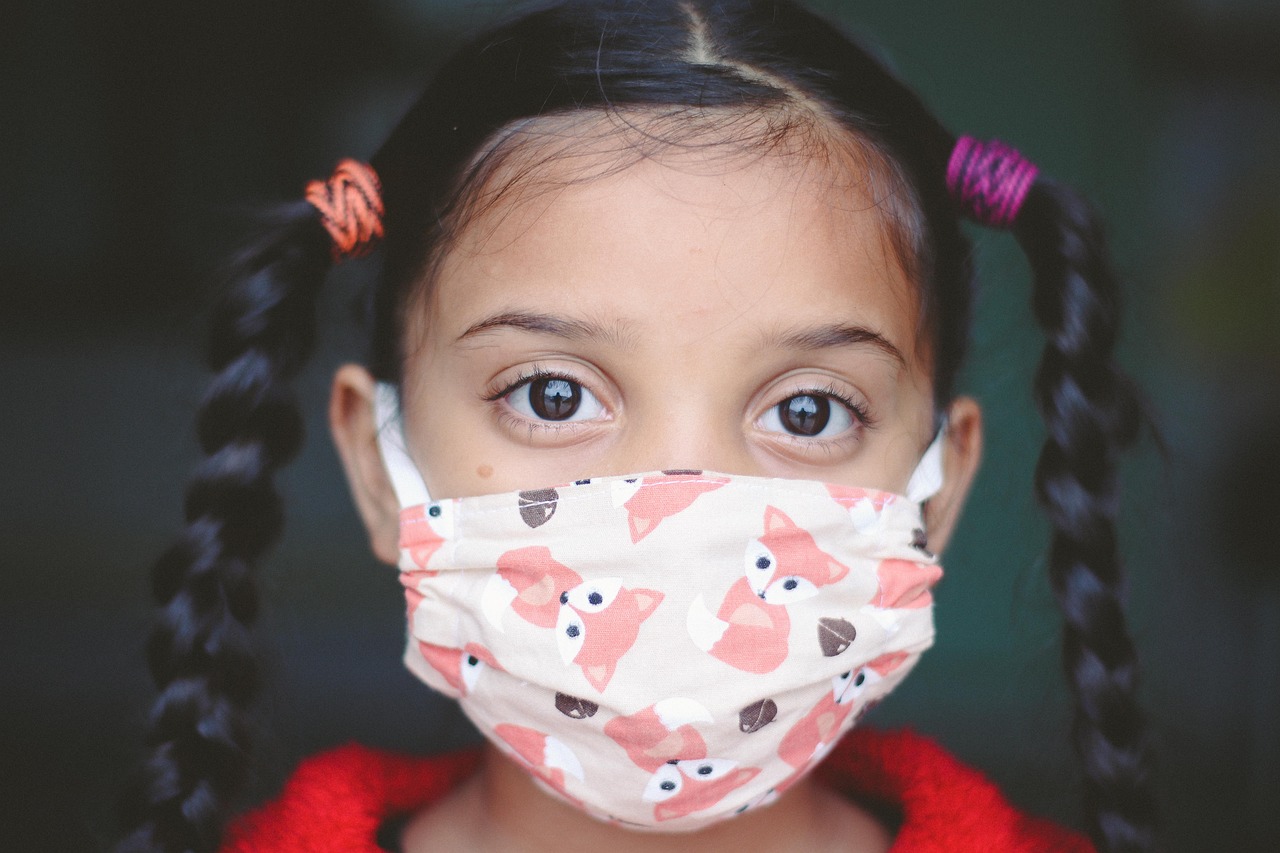
Childproofing Your Home
When it comes to creating a safe haven for your little ones, is not just a suggestion—it's a necessity. Children are naturally curious, and their explorative nature can sometimes lead them into hazardous situations. Imagine your home as a playground, where every corner can either be a safe spot for fun or a potential risk. To ensure your child can explore freely without encountering dangers, consider implementing several practical strategies that focus on safety.
One of the first steps in childproofing is to secure heavy furniture. Think about it: a bookshelf that could topple over or a dresser that could tip can pose serious risks. By anchoring these pieces of furniture to the wall, you can prevent them from falling and causing injuries. Additionally, be sure to check your home for any sharp edges on furniture. Using corner guards can help soften these edges, making your space safer for little ones who might bump into them while playing.
Next, let’s talk about electrical outlets. These can be particularly enticing for young children, who often see them as a mystery waiting to be explored. Installing outlet covers is a simple yet effective way to keep tiny fingers from poking into places they shouldn’t. Moreover, it’s wise to keep cords from blinds or curtains out of reach, as they can pose strangulation risks. In fact, you might want to consider using cord wraps or clips to keep them neatly tucked away.
Another critical area to focus on is the kitchen. This is the heart of the home, but it can also be a minefield for curious toddlers. Think about installing child locks on cabinets that contain cleaning supplies, sharp utensils, or anything else that could be hazardous. It’s not just about locking things away; it’s about creating a space where children can safely engage with their environment. Even simple things like keeping hot pots and pans on the back burners and out of reach can prevent serious burns.
And let’s not forget about the bathroom, which can be a slippery zone for little feet. Non-slip mats are essential for preventing falls, and you might also want to consider installing a toilet lock to keep curious toddlers from exploring. Additionally, always keep medications and toiletries stored out of reach or in locked cabinets, as these can be harmful if ingested.
Finally, creating a safe outdoor environment is just as important. If you have a yard, ensure that fences are secure and that any tools or equipment are stored away safely. Supervision is key, but taking these extra precautions can give you peace of mind while your children play outside. Remember, childproofing is an ongoing process; as your child grows, their needs and the potential hazards in your home will change.
- What are the most common hazards in a home for children?
Common hazards include sharp objects, electrical outlets, heavy furniture, and toxic substances like cleaning supplies.
- How can I make my kitchen safer for my children?
Use child locks on cabinets, keep sharp objects out of reach, and ensure hot items are placed on the back burners.
- Is it necessary to childproof my home if I have older children?
Yes, even older children may have younger siblings or friends over, so it’s important to maintain safety measures.
- When should I start childproofing my home?
It’s best to start childproofing before your baby starts crawling, but you can always reassess as they grow.
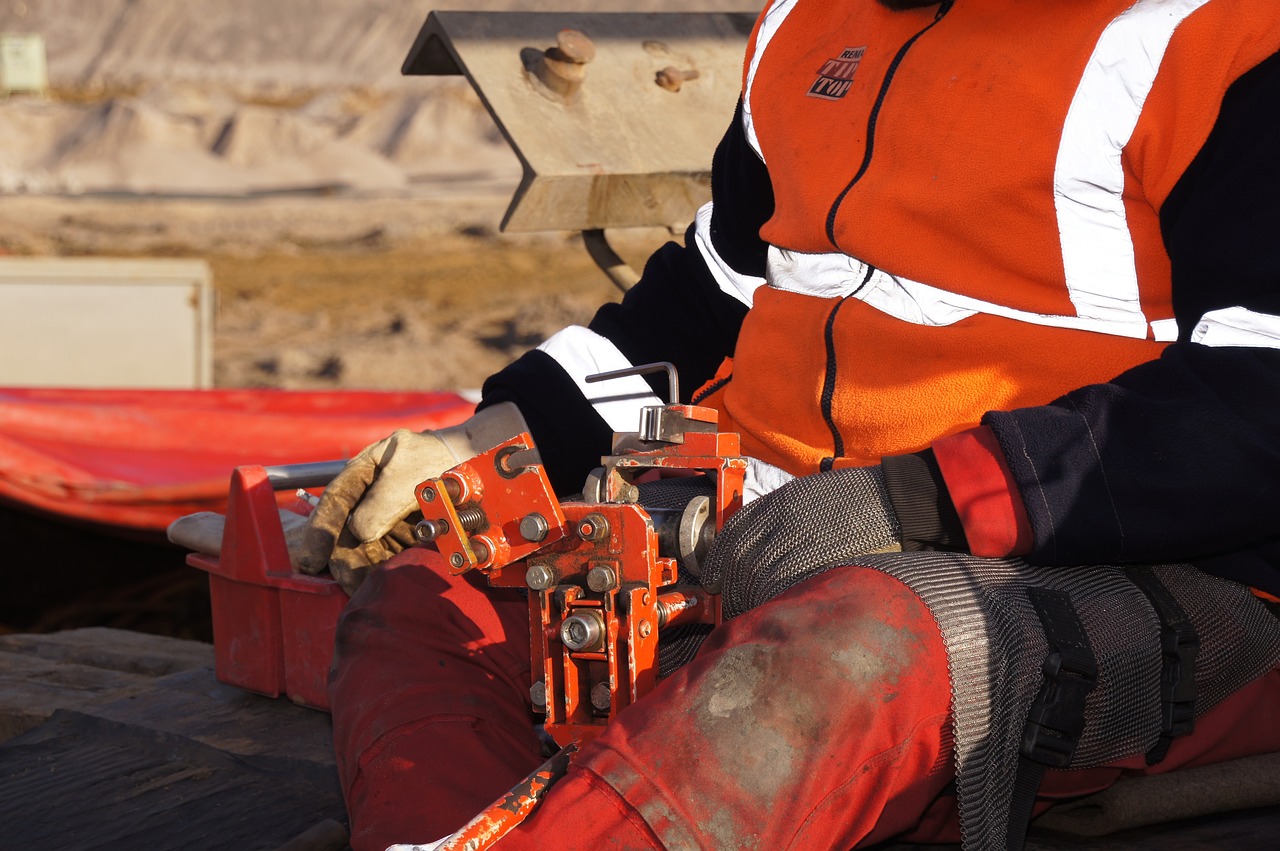
Kitchen Safety Practices
The kitchen is often considered the heart of the home, where delicious meals and cherished memories are created. However, it can also be a hotspot for accidents if proper precautions aren't taken. To ensure a safe cooking environment, it's essential to adopt effective that cater to all family members, especially young children. One of the first steps is to establish a designated cooking area free from distractions. This means keeping the space organized and ensuring that everything you need is within reach, minimizing the chances of accidents occurring due to clutter.
Another crucial aspect of kitchen safety is the proper storage of hazardous items. For instance, sharp knives and utensils should be stored in a secure location, preferably in a locked drawer or cabinet, to keep them out of the reach of curious little hands. Consider using childproof locks on cabinets that contain cleaning supplies or other dangerous materials. This simple measure can prevent children from accessing toxic substances, which could lead to serious injuries or health issues.
In addition to securing dangerous items, it’s vital to teach children about kitchen safety. Engaging them in conversations about the risks associated with cooking can instill a sense of responsibility. For example, you might explain why it's important to stay away from the stove when it's in use or why they should never touch hot pots and pans. Visual aids, like a kitchen safety chart, can be a fun way to reinforce these lessons. You could even create a small poster with key safety rules and hang it in the kitchen for everyone to see.
Furthermore, it’s essential to maintain a clean and tidy kitchen. Spills should be cleaned up immediately to prevent slips and falls, and surfaces should be sanitized regularly to avoid cross-contamination. Establishing a routine for cleaning can make this task more manageable. For example, you could set aside a few minutes each day to wipe down countertops and sweep the floor. This not only keeps the kitchen safe but also makes cooking more enjoyable.
Lastly, being prepared for emergencies is a critical component of kitchen safety. Having a well-stocked first aid kit readily available can make a significant difference in how you respond to minor injuries. Additionally, knowing how to handle kitchen fires is essential. Always keep a fire extinguisher nearby, and familiarize yourself with its use. In case of a fire, knowing how to safely extinguish it or evacuate the area can save lives.
In summary, by implementing these , you can create a safer cooking environment for everyone. From organizing your space and securing hazardous items to educating your family about safety, each step you take contributes to a more secure household. Remember, a safe kitchen is a happy kitchen!
- What are the most common kitchen injuries? The most common kitchen injuries include cuts, burns, and slips and falls. These can often be prevented with proper safety measures.
- How can I childproof my kitchen effectively? To childproof your kitchen, use child locks on cabinets, store sharp objects out of reach, and teach children about kitchen hazards.
- What should I include in a kitchen first aid kit? A kitchen first aid kit should include band-aids, antiseptic wipes, gauze pads, adhesive tape, scissors, and burn cream.
- How can I prevent kitchen fires? Prevent kitchen fires by staying attentive while cooking, keeping flammable materials away from heat sources, and having a fire extinguisher readily available.

Emergency Preparedness
When it comes to ensuring the safety of your family, being prepared for emergencies is not just a good idea; it's a necessity. Imagine this: a sudden fire breaks out in your kitchen, or perhaps a severe storm causes a power outage. In these moments, having a solid emergency plan can mean the difference between chaos and calm. Preparation is your best friend, and it starts with a few essential steps that everyone in your household should be aware of.
First and foremost, a well-stocked first aid kit is crucial. This kit should be easily accessible and include items like bandages, antiseptic wipes, pain relievers, and any necessary medications. But don't just stop there; regularly check your kit to ensure that everything is up to date. An expired medication or an empty bandage can turn a minor injury into a major issue!
Next, consider creating a list of emergency contacts. This list should include family members, close friends, and local emergency services. Keep this list in a prominent place, such as on your refrigerator, so that it's visible and easy to access during a crisis. In addition, discuss with your family how to reach these contacts in different scenarios. For instance, if the phone lines are down, can you use a neighbor's phone? Do you have a designated meeting place if you need to evacuate?
Another critical aspect of emergency preparedness is having a clear evacuation plan. Sit down with your family and map out the safest routes out of your home. Make sure everyone knows where to go and what to do in case of an emergency. Practice these routes regularly, much like a fire drill in school. This will help everyone stay calm and collected when the real situation arises. You can even set up a
| Room | Evacuation Route | Meeting Point |
|---|---|---|
| Living Room | Exit through the front door | Neighbor's yard |
| Kitchen | Exit through the back door | Park across the street |
| Bedroom | Exit through the window | Tree in the backyard |
Lastly, don’t forget to educate your family about the importance of staying calm during emergencies. Panic can lead to poor decision-making, so practicing how to react can help everyone keep their heads cool when it counts. Encourage open discussions about potential hazards and what to do in case of an emergency. This practice not only builds awareness but also fosters a sense of responsibility among family members.
In conclusion, being prepared for emergencies is about more than just having supplies on hand; it’s about creating a culture of safety and awareness within your home. By taking these proactive steps, you can ensure that your family is ready to face any situation that may come their way. Remember, a little preparation goes a long way in keeping your loved ones safe!
- What should I include in my first aid kit? - Essential items include bandages, antiseptic wipes, scissors, tweezers, and any personal medications.
- How often should I check my emergency supplies? - It's recommended to check your supplies every six months to ensure everything is up to date.
- What is the best way to educate children about emergencies? - Use role-playing scenarios and discussions to help them understand what to do in various situations.
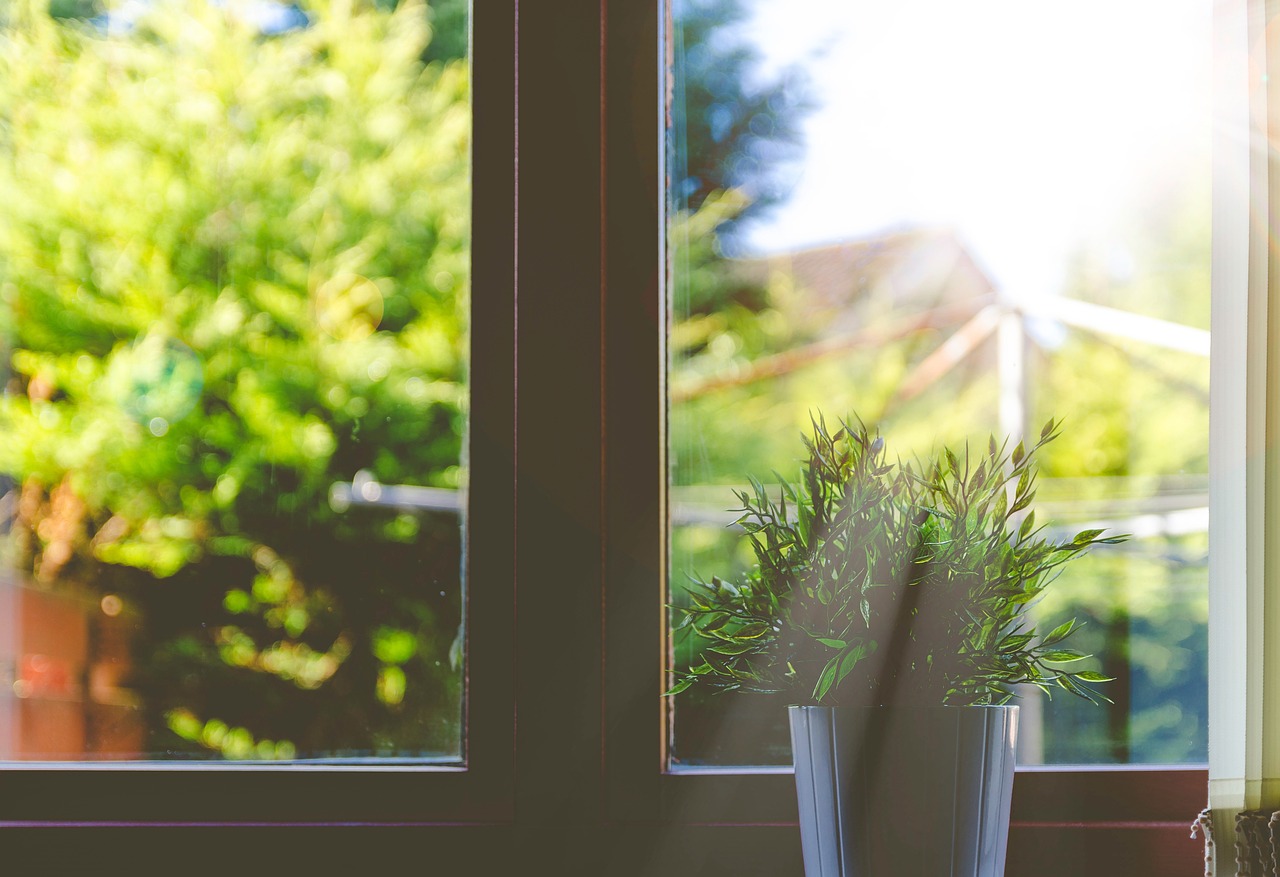
Educating Family Members
Education plays a vital role in injury prevention within the home. It’s not just about installing safety measures; it’s about fostering a culture of safety where everyone, from the youngest to the oldest, understands the risks and knows how to mitigate them. Imagine your home as a fortress—every family member is a guard, and the better they are trained, the safer the fortress remains. So how do we equip our guards?
First, start with open discussions. Create a comfortable environment where family members can talk about safety concerns without feeling embarrassed or dismissed. For instance, if your child is afraid of the dark, discuss how proper lighting can help. This not only addresses their fears but also emphasizes the importance of safety in a relatable way. Consider holding regular family meetings dedicated to safety topics. You could even create a fun safety challenge where everyone shares one new safety tip they learned that week!
Next, it’s crucial to teach practical skills. For example, show your children how to use kitchen appliances safely, or explain the importance of not running indoors. You might even organize a mini safety drill—practice what to do in case of a fire or an emergency. This not only prepares everyone but also makes the learning process engaging and memorable. Remember, education isn’t just about lectures; it’s about interaction and practice.
Additionally, consider creating a safety checklist that can be displayed in common areas, like the kitchen or living room. This checklist could include:
- Checking smoke detectors monthly.
- Ensuring exits are clear and accessible.
- Reviewing emergency contacts and procedures.
By regularly reviewing this checklist together, you’re not just reminding family members of safety practices; you’re also reinforcing their importance. It’s a simple yet effective way to keep safety top of mind.
Finally, lead by example. Children often imitate adults, so if they see you prioritizing safety—whether it’s wearing a seatbelt, using kitchen knives carefully, or adhering to fire safety protocols—they’re more likely to adopt the same habits. It’s about creating a ripple effect of safety consciousness that permeates your home.
In conclusion, educating family members about safety isn’t a one-time event; it’s an ongoing process that requires patience, creativity, and commitment. By fostering open communication, teaching practical skills, utilizing checklists, and leading by example, you can significantly enhance your home’s safety culture. Remember, a well-informed family is a safer family!
Q: How often should we discuss safety in our home?
A: It's beneficial to have regular discussions, perhaps monthly or quarterly, to keep safety top of mind and to address any new concerns.
Q: What age is appropriate to start teaching children about home safety?
A: You can start teaching children about basic safety as early as three years old, adapting the complexity of the information as they grow older.
Q: Should we involve children in safety drills?
A: Absolutely! Involving children in safety drills not only prepares them for emergencies but also helps them understand the importance of safety measures in a fun way.
Frequently Asked Questions
- What are the most common types of home injuries?
Home injuries can vary widely, but the most common types include falls, cuts, burns, and poisoning. Recognizing these risks is crucial for implementing effective prevention strategies.
- How can I prevent falls in my home?
To prevent falls, you can take several simple steps: remove tripping hazards like loose rugs, install grab bars in bathrooms, ensure proper lighting in all areas, and regularly declutter your living spaces.
- What safety measures should I implement in the bathroom?
In the bathroom, consider installing non-slip mats, grab bars, and shower seats. These additions can significantly enhance safety, particularly for elderly family members and young children.
- How can I childproof my home effectively?
Childproofing involves securing heavy furniture to walls, covering electrical outlets, and keeping hazardous materials out of reach. Additionally, using child locks on cabinets can help keep little ones safe while they explore.
- What should I include in my emergency preparedness plan?
Your emergency preparedness plan should include a well-stocked first aid kit, a list of emergency contacts, and a clear evacuation plan. Regularly reviewing and practicing this plan can help everyone respond effectively in case of an emergency.
- How can I educate my family about safety practices?
Education is key to fostering a culture of safety at home. Engage in open discussions about potential hazards, demonstrate safe practices, and encourage family members to share their thoughts on safety improvements.
- What are some kitchen safety tips to prevent injuries?
In the kitchen, use child locks on cabinets, keep sharp objects out of reach, and always supervise children while cooking. Additionally, ensure that hot surfaces and liquids are placed away from the edges of counters.
- Why is proper lighting important for home safety?
Proper lighting is essential for preventing falls and other accidents. Well-lit areas, especially staircases and hallways, allow individuals to navigate safely and reduce the likelihood of injuries in low-visibility conditions.



















